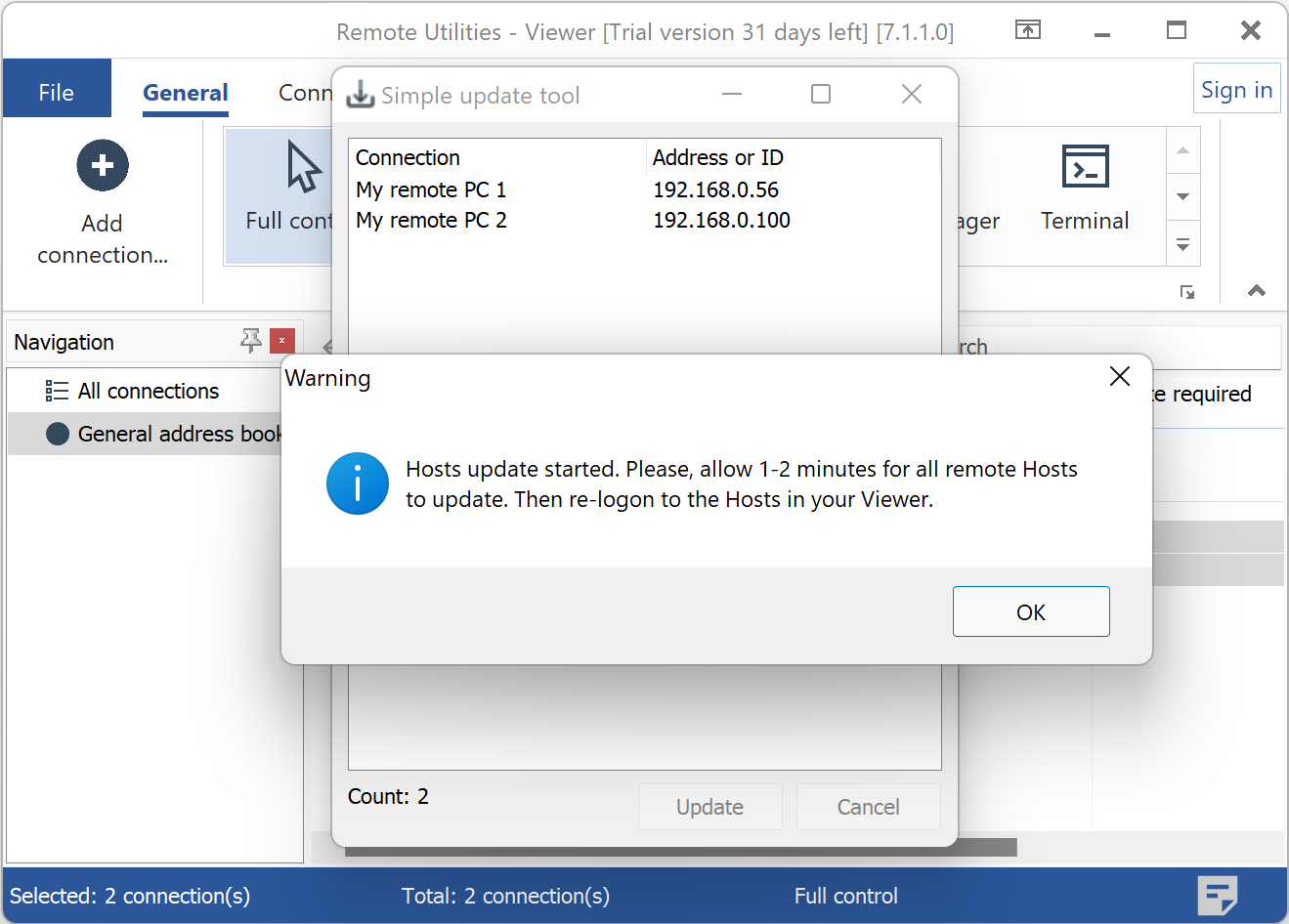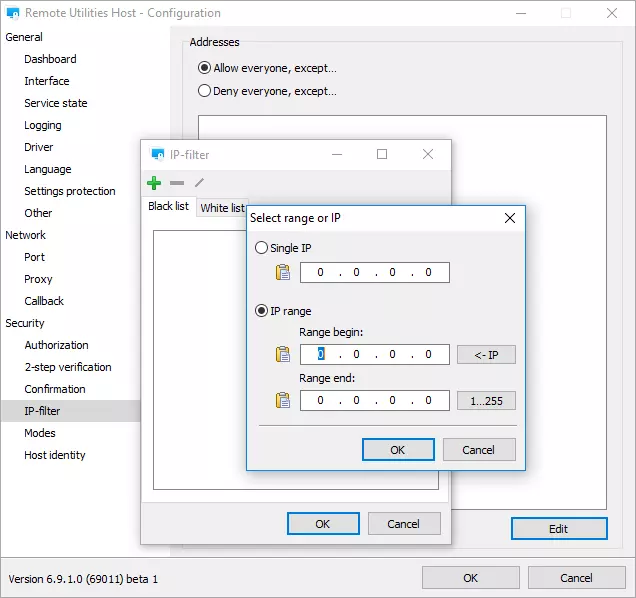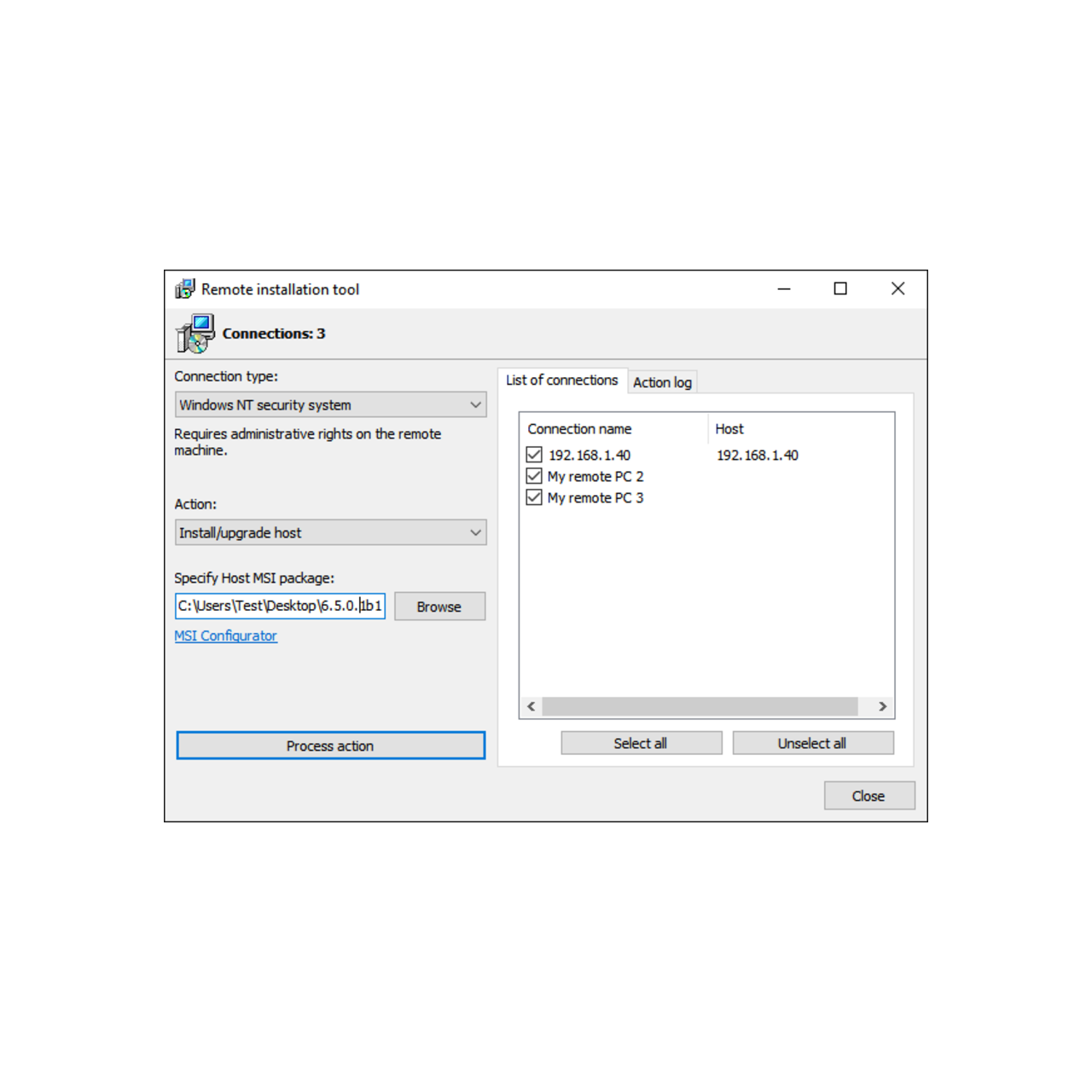

- #REMOTE UTILITIES REBOOT HOST HOW TO#
- #REMOTE UTILITIES REBOOT HOST INSTALL#
- #REMOTE UTILITIES REBOOT HOST UPDATE#
- #REMOTE UTILITIES REBOOT HOST SOFTWARE#

#REMOTE UTILITIES REBOOT HOST INSTALL#
It is even easier to setup and deploy including remote install and Group Policy install on the LAN.
#REMOTE UTILITIES REBOOT HOST SOFTWARE#
It seems to have all the best parts of the most popular choices of remote control software but better and with more options too. Saved lots of time for me and I don't have a large network. If you restart Windows, the Host service also starts automatically unless you change this behavior in the Host Startup mode dialog.
#REMOTE UTILITIES REBOOT HOST UPDATE#
The service starts automatically when you install or update the Host. The best part for me is the Active Directory integration. In order for the Host to work properly, its service must be running on the Host PC. It seems everyday I find something new I can do with it and it is all included in one license fee. Remote utilities does everything I need it to do and more. My oh my, I am so glad I made the time to check this out before going with one of my other choices. I shared my frustration with my IT support person and he asked me if I ever looked into the link to Remote Utilities he had sent me, The light bulb shined as I remembered that was one of the e-mails that I had been keeping in my inbox to check out someday when I had some free time. On Solaris and FreeBSD, this will be seconds. On Linux, macOS and OpenBSD, this is converted to minutes and rounded down. Each one has something the other has or does something slightly better then the other but none of them knocked my socks off. Passed as a parameter to the reboot command. It sat in my inbox for five months until one day while pounding by head against the wall trying to figure out what would do more of what I want DameWare, LogMeIn or TeamViewer. EMCO Remote Installer Professional v3.10.6. One of the first things my new Computer Support provider did was send me the link to Remote Utilities. remote utilities, 487 records found, first 100 of them are: 8Signs Firewall Remote Administration Tool 2.30.

This command will shutdown a remote computer. Restart-Computer -ComputerName REMOTECOMPUTERNAME -Force Example 2: Use PowerShell to shutdown a computer. The -Force option will force a restart even if a user is logged on. It is closely integrated with Active Directory and provides remote installation across multiple PCs as well as AD authentication support. This command will immediately restart a remote computer. I have found that solution here with Remote Utilities. Remote Utilities Server 2.8.2.0: 7.0 MB: Freeware : Remote Utilities is remote desktop software for network administration in a Windows domain network. In the Add or Remove Snap-ins dialog box, click OK.I have been on the hunt for a remote control solution that I could wrap my arms around and have it do all I want it to do and not have to break the bank or have to pay forever. If you select Another computer, either type in the name of the computer or use Browse to search for the computer. In the Select Computer dialog box, select whether you want to connect to the local computer or to another computer. Under Available snap-ins, click Remote Desktop Session Host Configuration, and then click Add. On the File menu, click Add/Remove Snap-in. To run Remote Desktop Session Host Configuration from the Microsoft Management ConsoleĬlick Start, click Run, type mmc and then press ENTER.
#REMOTE UTILITIES REBOOT HOST HOW TO#
This page shows how to restart Linux system using ssh command. The ssh client is a defacto standard in Linux and Unix world for managing servers. To run Remote Desktop Session Host Configuration from Server ManagerĬlick Start, point to Administrative Tools, and then click Server Manager.Įxpand Remote Desktop Services, and then click Remote Desktop Session Host Configuration. In short, ssh is a client-server technology that allows secure remote login from one computer to another. To run Remote Desktop Session Host Configuration from the Start menuĬlick Start, point to Administrative Tools, point to Remote Desktop Services, and then click Remote Desktop Session Host Configuration.Ĭlick Start, click Run, type tsconfig.msc and then press ENTER.


 0 kommentar(er)
0 kommentar(er)
